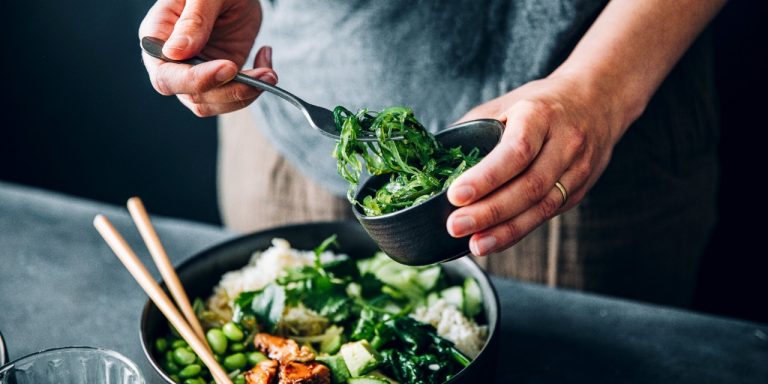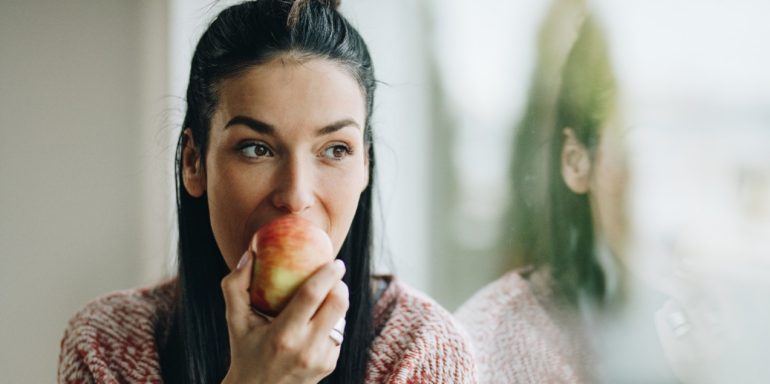
Gluten-free diets: effect and advantages
What does a gluten-free diet do and are there any side effects? How can you switch to a gluten-free diet? Find out more about gluten-free nutrition and gluten-free foods.
What is a gluten-free diet?
A gluten-free diet cuts out all foods that contain gluten. Gluten is a protein found in certain grains such as wheat, rye and barley. It makes certain types of flour suitable for baking and is mainly to be found in products made from grains.
However, gluten can also be contained in products that, at first glance, have nothing to do with grains. Gluten is a good emulsifier and carrier of flavourings. It gels, binds water and stabilises. As a result, the food industry often uses it as an auxiliary ingredient in ready-made products and highly processed foods.
Gluten-free diet: what are the benefits?
What are the advantages of a gluten-free diet? Following a strict life-long gluten-free diet is the only treatment option available to people with coeliac disease. Even small traces of gluten can damage the mucous membrane of the small intestine again. Specific benefits of a gluten-free diet for those affected are:
- Symptom relief: sufferers avoid digestive problems such as bloating, diarrhoea and abdominal pain.
- Improved nutrient absorption: the mucous membrane of the small intestine of those affected can regenerate and further damage is prevented. This promotes the absorption of nutrients.
- Prevention of long-term damage: the mucous membrane of the small intestine remains intact. This avoids the long-term effects of nutrient deficiencies such as osteoporosis.
Living gluten-free has no benefits for people who are not affected by coeliac disease or gluten sensitivity. Healthy people sometimes report an increased sense of well-being due to a gluten-free diet. However, researchers point to a placebo effect whereby those who believe they’re eating a healthy diet feel healthier too.
Does a gluten-free diet have side effects? A gluten-free or low-gluten diet does not automatically pose a health risk. However, avoiding gluten without consuming an equivalent substitute can lead to nutrient deficiencies. This is because gluten-containing foods such as whole wheat are important sources of fibre, vitamins and minerals. In addition, a gluten-free diet can also cause constipation. That said, this can be prevented with a sufficient intake of fibre and fluids.
If you are unsure about the risks of a gluten-free diet, talk to your doctor or health care professional before making any dietary changes. They will tell you whether this type of diet is suitable for you and, if necessary, arrange for testing. A change in diet should always be overseen by a nutritionist to avoid any mistakes.
Note: some people want to lose weight using a gluten-free diet, but this diet does not automatically lead to weight loss. What matters is a balanced diet combined with enough exercise.
Gluten-free diet: what can’t I eat?
If you have to switch to gluten-free food, you should check each foodstuff systematically. Foods containing gluten include:
- Wheat
- Rye
- Spelt
- Barley
- Regular oats
- Pearl barley
- Processed products made from or with the above-mentioned cereals (e.g. pasta, cakes, breadcrumbs, beer)
- Possibly products such as spice mixes, tinned food, fruit juices with additives, light cheeses, cured meats
If you are on a gluten-free diet, you should always check the ingredient list when buying processed products. Gluten is often used in the food industry as an auxiliary ingredient (e.g. as an emulsifier, carrier or binder).
What is gluten-free food?
When switching to gluten-free foods, there are several alternatives available to you. You can use the following list as a guide when buying gluten-free foods:
- Gluten-free cereals and flours: corn, quinoa, buckwheat, amaranth, millet. Flours made from these cereals are suitable for baking, as well as, for example, cassava, coconut or chickpea flour.
- Starchy foods: potatoes and corn provide a good basis for many dishes and are naturally gluten-free.
- Rice: wild rice and rice noodles made from rice flour are versatile foods that you can use in different recipes.
- Pasta: there are many gluten-free pasta alternatives made from rice, corn, lentils and chickpeas.
- Bread and baked goods: there are a variety of gluten-free breads and baked goods available in stores. Check the list of ingredients to ensure that these meet your dietary requirements.
Unprocessed foods such as meat, fish, eggs, milk and dairy products, vegetables, fruit, vegetable oils and sugar are also gluten-free. Gluten is an allergen and therefore must be labelled. Gluten-free foods can usually be recognised by the symbol of a crossed-out ear of corn.
Gluten-free diet: find recipes
Looking for gluten-free recipe inspiration? There are countless blogs, cookbooks and online platforms offering creative ideas that show how versatile and delicious a gluten-free diet can be. You can find more gluten-free recipe ideas in the Helsana Coach app. Discover recipes and nutritional information tailored to your diet to help make your switch to a gluten-free diet easy.
Our health consultation advisors are happy to help you. They can provide you with helpful information and specific recommendations for action for a balanced diet.
Gluten-free diet: tips
Switching to a gluten-free diet can be challenging at first, but a few targeted strategies can make it easier. Here’s how:
- Take a look at your eating habits: identify gluten-free foods that you like to eat. Make a list of alternatives for gluten-containing products to ensure your gluten-free diet meets your needs.
- Gluten-free shopping: explore the range of gluten-free products at leisure when you do your first gluten-free shop. Many supermarkets and health food stores offer a wide range of gluten-free bread and baked goods, pasta, muesli and much more. Read the ingredient lists and look for the crossed-out ear symbol for gluten-free products. If necessary, ask for advice in a health food store.
- Stick to your shopping list: stick to your list and avoid impulse buying. Gradually test new gluten-free products and expand your menu to find products that you can incorporate into your daily diet.
A gluten-free diet does not mean that you have to miss out on enjoyment and diversity. With the right planning and some adjustments, you can implement a gluten-free diet that is healthy and varied. If you are unsure or have any concerns, talk to your doctor.

The specialist provided the editorial team with advice and input for this article. Andrea Bovisi (BSc BFH dietitian) works in the Helsana Health Consultation Service. She helps customers on issues to do with nutrition and health promotion.


Newsletter
Find out more about current health issues every month and get all the information you need about our attractive offers from all Helsana Group companies * delivered by e-mail to read whenever it suits you. Our newsletter is free of charge and you can sign up here:
- Ms
- Mr
We did not receive your information. Please try again later.
* The Helsana Group comprises Helsana Insurance Company Ltd, Helsana Supplementary Insurances Ltd and Helsana Accidents Ltd.